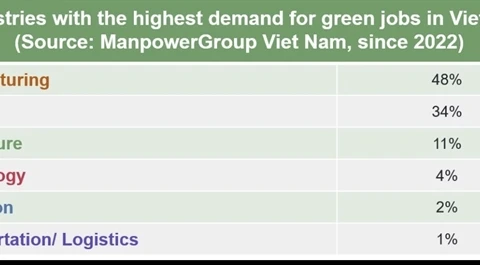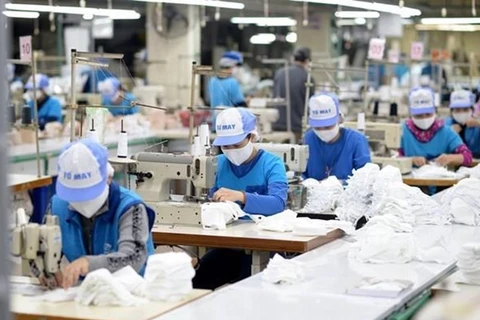Hanoi (VNA) – Ten groups of occupations are recording a sharp fall in recruitment demand, and the unemployment rate may increase in the time ahead, said recruiting service provider Navigos Group.
Navigos predicted in late May that the labour market will continue facing difficulties.
The 10 groups are tourism, restaurant, hotel; textile - garment and leather - footwear; construction and real estate; purchasing, material supply, and transport; information technology; export and import; transportation and logistics; legal and administrative affairs; marketing; and sale and customer care.
The firm forecast until the global economy bottoms out and recovers, businesses will keep taking cost cutting measures to retain employees or further tighten their belt if the situation gets worse, reported the Lao dong (Labour) daily.
In a recent report on problems facing enterprises and economic outlook for the last half of 2023, the Research Board for Private Economic Development (Board IV) said the wave of lay-offs is likely to continue in the remaining months of this year due to macro difficulties and internal issues of businesses.
About 5,200 of the nearly 9,560 companies surveyed said they plan to cut over 5% of their employees from now to the end of 2023.
Vo Quang Thanh, Deputy Director of the Hanoi Employment Service Centre, said the local labour market remains generally positive, but businesses may have to struggle with numerous difficulties in the coming months. The labour market’s recovery and development prospects will depend much on the city’s socio-economic development situation.
Recruitment demand will vary according to sectors and changes in the domestic and global economies. It may post a growth slowdown, he noted.
Recruitment demand in Hanoi is expected to surge in such sectors as tourism, wholesale and retail, and transportation and logistics. Meanwhile, order shortages will lead to job reduction in export and export, rubber and plastics manufacturing, and wood processing.
Addressing a question-and-answer session of the National Assembly on June 6, Minister of Labour, Invalids and Social Affairs Dao Ngoc Dung said that 8,644 businesses had to lay off workers in the first months of 2023, accounting for 1% of all companies. Among them, 27.4% were foreign invested firms and 72.18% non-State ones. Lay-offs were triggered mainly by economic causes, including difficulties in seeking and expanding foreign markets./.
Navigos predicted in late May that the labour market will continue facing difficulties.
The 10 groups are tourism, restaurant, hotel; textile - garment and leather - footwear; construction and real estate; purchasing, material supply, and transport; information technology; export and import; transportation and logistics; legal and administrative affairs; marketing; and sale and customer care.
The firm forecast until the global economy bottoms out and recovers, businesses will keep taking cost cutting measures to retain employees or further tighten their belt if the situation gets worse, reported the Lao dong (Labour) daily.
In a recent report on problems facing enterprises and economic outlook for the last half of 2023, the Research Board for Private Economic Development (Board IV) said the wave of lay-offs is likely to continue in the remaining months of this year due to macro difficulties and internal issues of businesses.
About 5,200 of the nearly 9,560 companies surveyed said they plan to cut over 5% of their employees from now to the end of 2023.
Vo Quang Thanh, Deputy Director of the Hanoi Employment Service Centre, said the local labour market remains generally positive, but businesses may have to struggle with numerous difficulties in the coming months. The labour market’s recovery and development prospects will depend much on the city’s socio-economic development situation.
Recruitment demand will vary according to sectors and changes in the domestic and global economies. It may post a growth slowdown, he noted.
Recruitment demand in Hanoi is expected to surge in such sectors as tourism, wholesale and retail, and transportation and logistics. Meanwhile, order shortages will lead to job reduction in export and export, rubber and plastics manufacturing, and wood processing.
Addressing a question-and-answer session of the National Assembly on June 6, Minister of Labour, Invalids and Social Affairs Dao Ngoc Dung said that 8,644 businesses had to lay off workers in the first months of 2023, accounting for 1% of all companies. Among them, 27.4% were foreign invested firms and 72.18% non-State ones. Lay-offs were triggered mainly by economic causes, including difficulties in seeking and expanding foreign markets./.
VNA


























